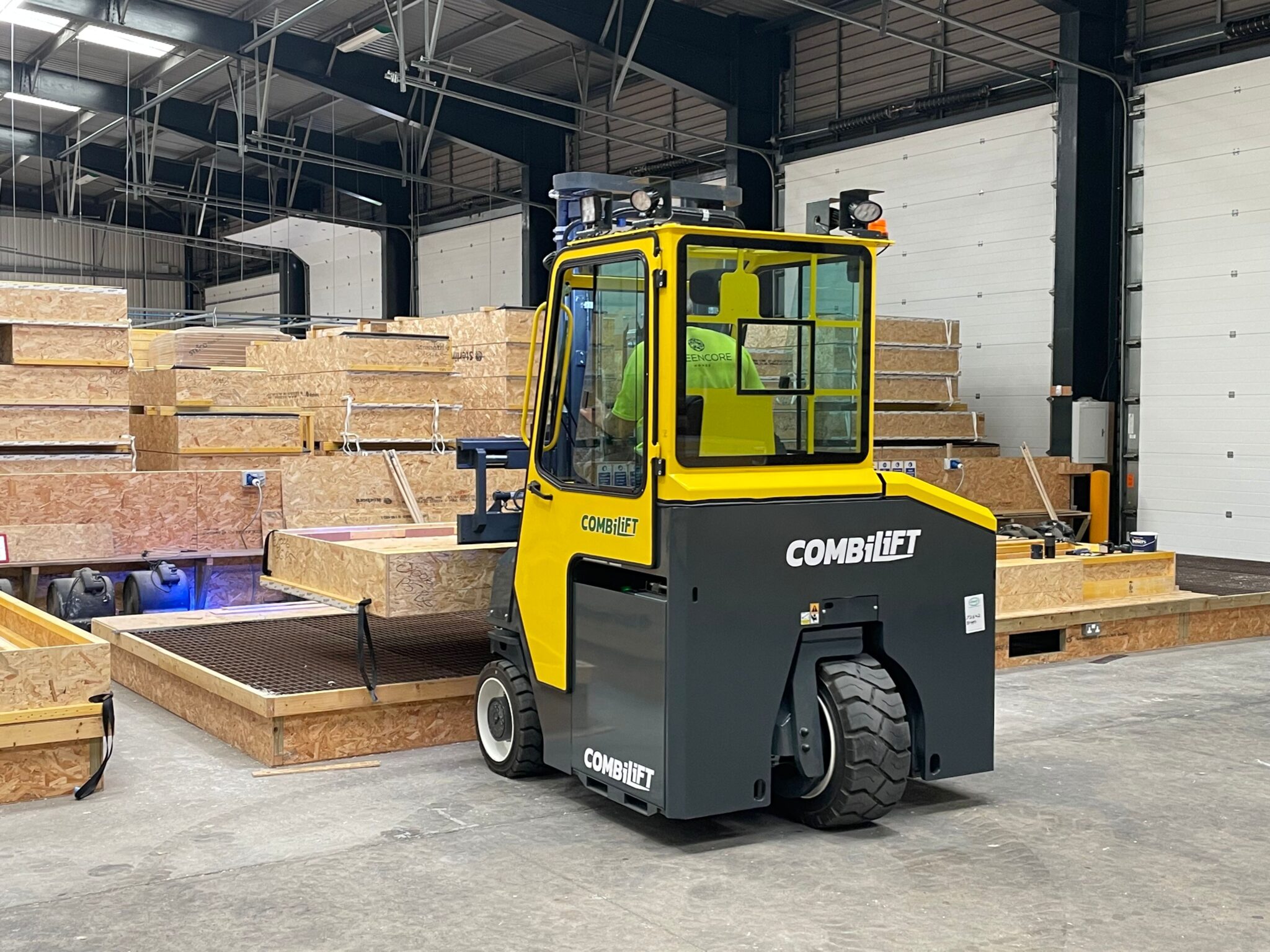Combilift co-founder Martin McVicar found some spare time in his busy schedule to chat with Peter MacLeod about another bumper year for the multidirectional forklift maker.
A year ago, I was supping Guinness alongside several hundred other invited guests to toast the 25th anniversary of Combilift. Founded by Martin McVicar and the inventor of the multidirectional forklift, Robert Moffett, the Irish manufacturer has gone from strength to strength. Following the launch of five new products to mark its silver jubilee, Combilift has been reaping the fruit of these new lines over the past 12 months.
For example, following the launch of the Combi AGT autonomous guided truck, it now has 21 pieces of equipment operating autonomously in a Chicago steel service centre. Also highlighted last year’s celebration event was Combilift’s ambition to enter the offshore wind energy sector with the Combilift LC blade handler. ”Not only have we won considerable amount of business for that product, but it has generated a number of accolades and awards for our business this year,” McVicar tells me. Indeed, it has been another successful year for the Irish manufacturer in terms of awards, capped by winning the Irish Exporter of the Year for an unprecedented third time in 20 years.
Service Enhancement
As editor, my head is constantly being filled with AI this and AI that, but McVicar somewhat refreshingly downplays the part the technology plays within his business. “What does it really mean in a business sense? I know we all are looking at driverless cars with AI, but there’s so many more ways we can use it to solve many other challenges. For example, with close to 90,000 Combilifts operating worldwide, spare parts is an important aspect of service our customers. So we’ve developed an AI solution for spare parts ordering, and when someone now orders spare parts from us, we use AI to alert the customer and suggest components they may need with it.”

With labour shortages affecting all areas of business, Combilift is making its equipment safer and more comfortable for the operator. “While customers originally bought our product for what it could do for their business, our current level of innovation is very much focused around operator comfort and safety around the operator,” McVicar tells me. “Unlike with cranes in the construction sector, in the regular forklift industry it’s not mandatory to have overload devices on a forklift truck. We all expect forklift operators to know the weight or the load centre of the load just by looking at it. That’s asking a lot from an operator. So we developed a very simple system called the Combilift Safe-Lift. It’s a strain gauge – a tool to measure the stress in the steel – fixed to the back of the mast. It detects when the mast is being put under too much stress and will trigger a warning or an interlock. In the palletised goods market, customers tend to know the weight of a pallet, but we work extensively in sectors with long and awkward loads where it’s very hard for a customer to know exactly what’s the weight or the load centre.”
Comfortable Position
Regarding ergonomics, McVicar says the Combi-CB 70E brought to market last year has earned Combilift a growing share in port applications, a market where Combilift haven’t been involved traditionally. “Our key markets are distribution centres, manufacturing plants, DIY stores… But a lot of ports are unionised, so operator comfort maybe plays even more of a part than in a facility that’s non-unionised. The comfort that we’ve brought with the 70E – a spacious cabin and 15° seat swivel – has really brought value in some industries we previously weren’t really involved in.”
Talking of growth markets, the traditional forklift market is quite challenged thanks to high interest rates.
But for Combilift, 2024 is going to be another record year. “We’re not seeing growth in every market, but in certain industries and certain markets,” says McVicar with a well-deserved smile. “The biggest growth is in developing countries such as Brazil, India, and some of the Eastern European markets like Poland, even Scandinavia. There’s also certain verticals where we’re getting substantial growth, such as the offshore industry and the poultry industry – our Combi-RT model carries chicken crates that are going to the processing factory.”
Heightened Lifting
Elsewhere, significant growth has come where there’s heavy investment in major infrastructure such as bridges and datacentres, where there’s opportunity for Combilift’s straddle carriers to move the bulky components and finished goods.
With continued investment in R&D – accounting for 6% of its revenue – McVicar says a number of new products will be coming to market during 2025, some of them for new industries and others within its core industries. With a growing international footprint, he signs off by urging me to write that Combilift is actively recruiting customer-facing managers in multiple markets worldwide, and to urge readers of this article to send in their CVs! Going by the last 26 years or so, successful applicants will be in for a long and fulfilling career.
similar news



